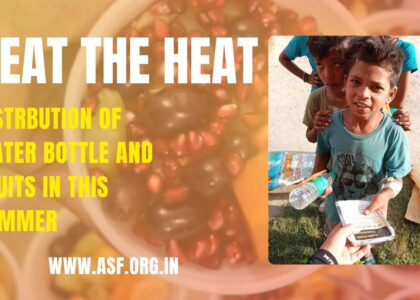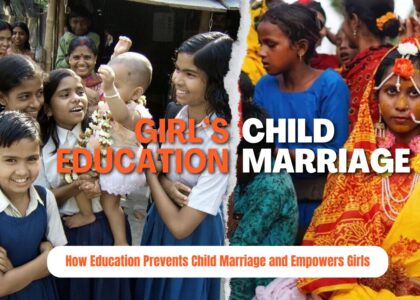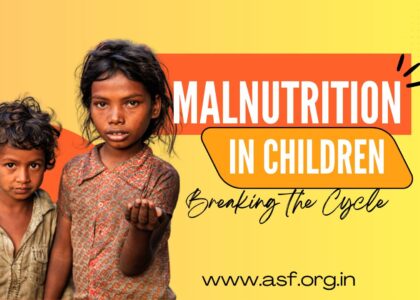Poverty in India: Causes, Impact & How We Can Eradicate It

Understanding Poverty in India
Poverty in India means not having basic needs like food, water, shelter, healthcare, and education. It affects millions of people, especially children, women, and the elderly.
Even though India is developing fast, many families still live in slums, go hungry, or drop out of school due to money problems.
Key Facts on Poverty in India (2023–24)
The numbers show how big the issue still is:
- 30 crore people live below the poverty line
- 22% of Indians earn less than ₹150 a day
- 1 in 3 children from poor families leave school early
- India ranks 105 out of 127 in the Global Hunger Index 2024.
- 68% of poor children suffer from malnutrition
- Over 50% of rural households lack clean water and sanitation
These are not just numbers. They are real people struggling to survive every single day.
Who Is Affected Most by Poverty?
Children
- Weak health due to hunger
- Drop out of school
- Many work as child labourers
Women
- Face discrimination
- Less access to jobs and healthcare
- Often manage households with no support
Elderly and Disabled
- Face discrimination
- Less access to jobs and healthcare
- Often manage households with no support
Causes of Poverty in India

Here are the major reasons why poverty continues:
- Lack of quality education
- Unemployment and low wages
- Expensive healthcare
- No access to toilets, water, or housing
- Gender inequality
- Caste and social discrimination
Most poor families get stuck in a cycle that passes from one generation to the next.
How You Can Help Fight Poverty in India

You don’t need to be rich to make a difference. Here’s how you can support:
- Volunteer your time to teach or assist in NGO activities.
- Help a poor child study by sponsoring school fees, books, or uniforms.
- Support free health check-ups and provide medicines to poor families.
- Donate nutritious meals to children and the homeless.
- Sponsor skill development courses for youth and women.
- Fund toilet building, clean water supply, and hygiene drives in slums.
- Celebrate your birthday or festival by donating food and clothes to the needy.
Why Ending Poverty in India Matters
Poverty in India is not just about low income. It’s about human dignity. It’s about a child sleeping hungry, a girl missing school, or an old man with no medicine.
Here’s why it matters:
- Poverty reduction improves health, education, and economic growth.
- Educated and healthy citizens lead to a skilled workforce and higher productivity.
- Fewer people in poverty means less crime, less hunger, and more peace.
- When we invest in the poor and underprivileged, we unlock new potential and innovation.
- Supporting the needy strengthens our values of compassion, equality, and justice.
- A poverty-free India means better lives, stronger families, and a brighter future for all.
Join Aapke Saath Foundation – Be the Change
We are committed to building a poverty-free India. Every rupee, every effort, and every share matters.
👉 Stand with us. Help us. Be the reason someone smiles today.
Get All the Info You Need About the Campaign from Our Volunteer
Feel free to contact our friendly volunteers—they’re happy to help!
FAQ: Poverty in India
Poverty in India is caused by factors like high population growth, lack of education, unemployment, low wages, and unequal distribution of resources.
Children in poverty often face malnutrition, lack of proper education, and limited access to healthcare, which affects their development and future opportunities.
The current poverty rate in India is estimated to be around 10%. While the percentage has decreased over time, millions still live in poverty.
Poverty in India is measured by income levels, access to education, healthcare, and basic services. The Multidimensional Poverty Index (MPI) is also used to assess overall well-being.
Programs like MGNREGA (employment guarantee), Public Distribution System (food security), and affordable housing initiatives like Pradhan Mantri Awas Yojana are designed to help those in need.
While it’s challenging to eliminate poverty entirely, India is making progress through economic reforms, government schemes, and social awareness, helping millions escape poverty.




